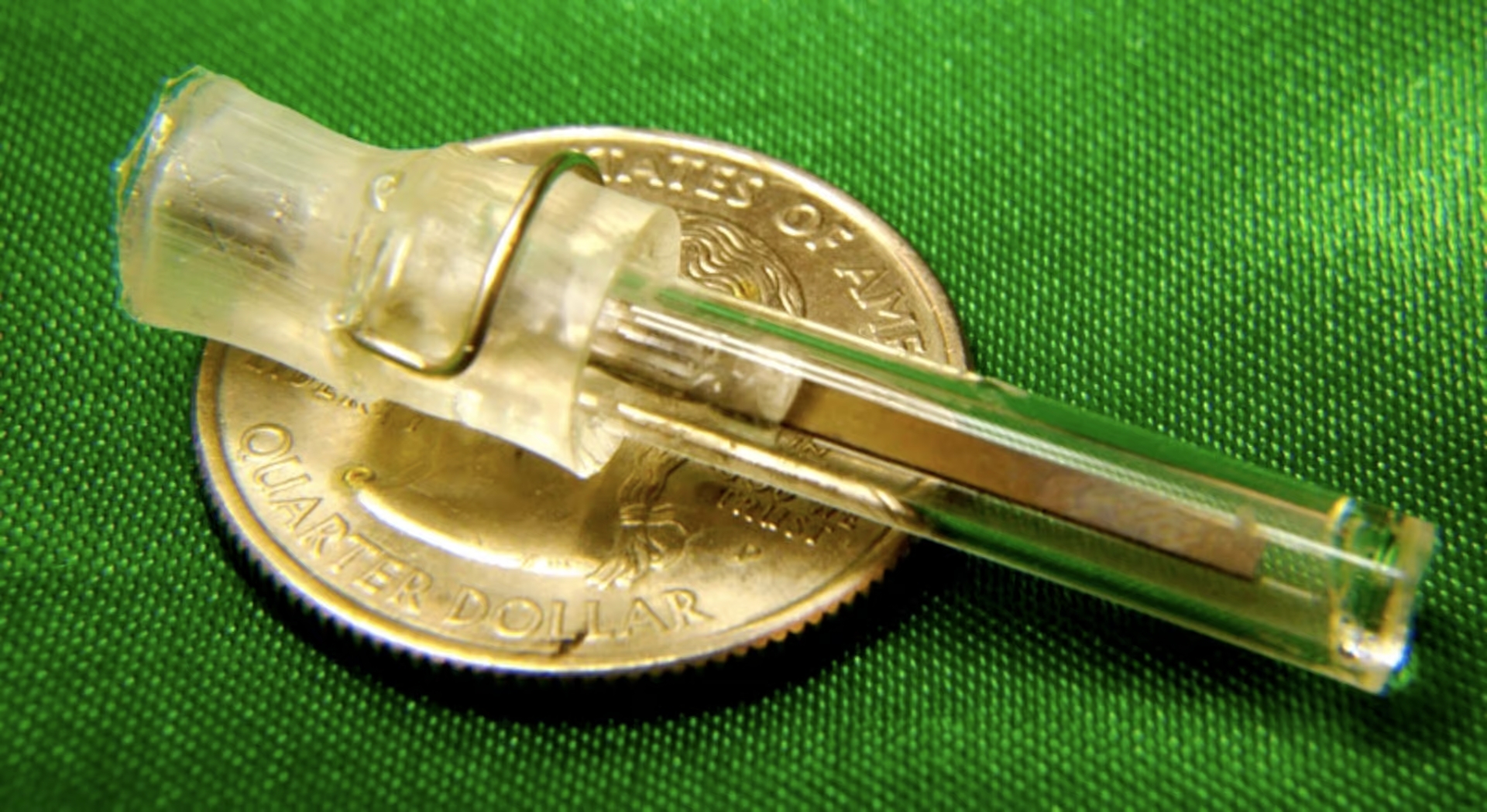
A novel power supply: the acoustic energy from bass-heavy riffs of rap music
We’ve been following the evolution of patient-embedded medical sensors for some time – miniature devices that run on batteries, transcutaneous (through-the-skin) induced current, even sugar, and provide constant monitoring of various metabolic parameters. Now, a team from Purdue University’s Birck Nanotechnology Center has developed a prototype pressure sensor which promises to address the shortcomings of previous designs and utilizes a novel power supply: the acoustic energy from bass-heavy riffs of rap music.
The team’s device is classed as a microelectromechanical system (MEMS) and features a tiny ceramic (lead zirconate titanate) piezoelectric cantilever which vibrates when exposed to sound frequencies from 200-500 hertz. Babak Ziale, a Purdue University professor of electrical, computer and biomedical engineering likens the cantilever to a miniaturized diving board that generates electricity when deformed. Acoustic vibrational energy such as that from certain forms of music can penetrate the body and be captured and stored as electricity in the circuit’s tiny capacitor which can then be used to power the pressure sensor. Measurement data, converted to radio signals, could then be read by a receiver placed several inches from the patient.
“You would only need to do this for a couple of minutes every hour or so to monitor either blood pressure or pressure of urine in the bladder,” Ziaie said. “It doesn’t take long to do the measurement.”
Recharging the tiny 2 cm device with music conveniently circumvents the occasional need for battery replacement and precise inductance coil alignments that beset conventional devices, so from a convenience standpoint alone, there appears to be a ready market for the new technology.







